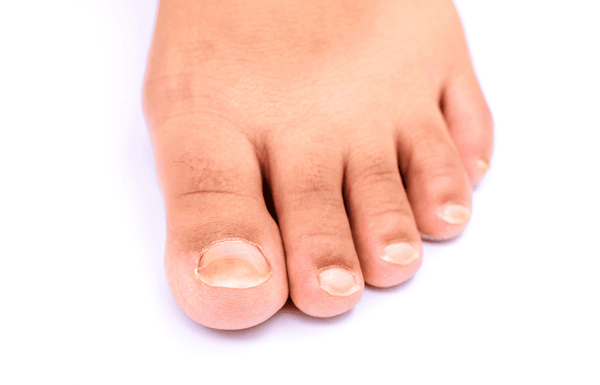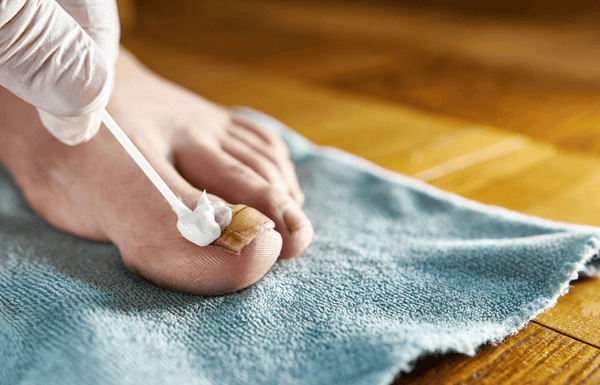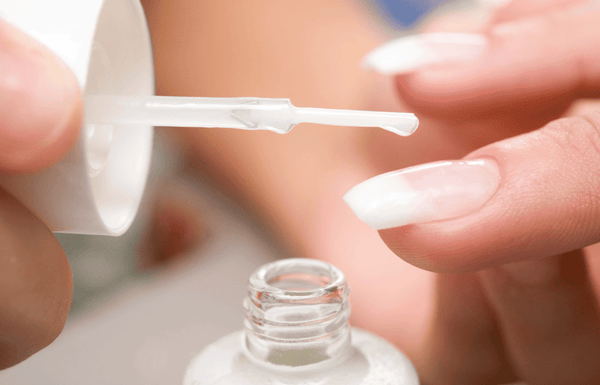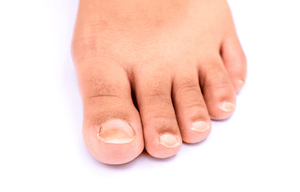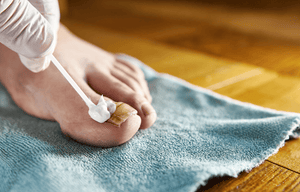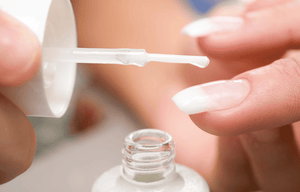
What Is Nail Fungus (Onychomycosis)?
Are you tired of hiding your feet because of unsightly, yellowed, thickened, or brittle nail beds? You’re in good company; many people struggle with nail fungus, and the quest for effective treatment can get frustrating:
Is that over-the-counter natural oil enough to banish your nail fungus? Do you need something stronger? When is it time to seek professional care?
Read on as we compare non-medicated and medicated treatments for nail fungus.
What Is Nail Fungus (Onychomycosis)?
Nail fungus, also known as onychomycosis, is a common fungal infection that affects the nail bed and the nail plate. While it can affect fingernails, it's more common in toenail beds, as they grow more slowly and are more frequently in warm, moist environments where fungi thrive.
Common Causes:
- Moist environments
- Poor foot hygiene
- Trauma to the nail bed
- Athlete's foot
- Reduced blood flow
- Issues with the immune system
Symptoms of Nail Fungus:
- Discoloration
- Thickening
- Brittleness
- Odor
- Nail bed separation
- Debris buildup
- Pain in the skin surrounding the nail
Non-Medicated Nail Fungus Treatments
For a less aggressive, more natural approach to nail fungus treatment, several non-medicated options are available. These remedies can often be found at your local drugstore or even in your pantry, including:
- Tea tree oil: This essential oil has natural antifungal properties and is a popular home remedy for fungal infections.
- Vinegar soaks: Soaking your feet in a diluted vinegar solution can help create an environment that is less favorable for fungal growth.
- Vicks VapoRub: This mentholated topical ointment is widely available and has shown some effectiveness in treating the fungus in small studies.
- Foot sprays: Over-the-counter antifungal sprays like Dr. Anti Fungus Hand + Foot Spray are often quick and effective.
- Other home remedies: Other natural remedies that are used to kill fungus and prevent fungal growth include baking soda pastes, garlic, and certain herbal soaks.
Benefits
- Easy to access - Non-medicated treatments are readily available at most pharmacies and grocery stores.
- Lower cost - These options are generally less expensive than prescription medications.
- Minimal to no side effects - Natural remedies typically have a lower risk of adverse reactions compared to oral antifungal drugs.
Limitations
- Often ineffective for moderate to severe infections - Non-medicated treatments may not be potent enough to eradicate well-established fungal infections.
- Require daily use for months - Consistency is key with these treatments, and it often takes many months to see any improvement.
- Inconsistent results and limited clinical support - The effectiveness of non-medicated treatments can vary significantly from person to person, and there is often less scientific evidence to support their use compared to medicated options. It can be hard to know if non-medicated nail fungus treatment actually works for sure.
Medicated Nail Fungus Treatments
When non-medicated treatments fail or when the infection is more severe, medicated options in topical or oral forms are designed to target the fungus more directly. Here are the options:
Topical Antifungals
Topical antifungal medications are applied directly to the affected nail bed and the skin surrounding the nails. Examples include ciclopirox (Penlac), efinaconazole (Jublia), and tavaborole (Kerydin).
Topicals are best for mild to moderate fungus and work by penetrating the nail plate to reach the nail bed and kill the fungus.
These solutions require long-term, consistent use. Like non-medicated treatments, topical antifungals need to be applied daily for several months, even up to a year, to be effective.
Prescription versions are more effective than OTC: While some topical antifungal medications are available over the counter, prescription-strength versions tend to be more effective.
Oral Antifungals
Oral antifungal medications like terbinafine and itraconazole are taken in pill form and work systemically, meaning they circulate throughout the bloodstream to reach the infection. They are best suited for severe, widespread, or stubborn infections.
Oral antifungals generally have higher success rates than topical treatments, but they can have potential side effects, including liver problems. Therefore, they require medical supervision, and your doctor may need to monitor your liver function with blood tests.
Also, keep in mind that oral antifungals can interact with other medications, so it's crucial to inform your doctor of all the medications you are taking.
Treatment duration is typically shorter than topical treatments, often lasting a few months, and you will need to follow up with your doctor.
Laser Therapy
Laser therapy for nail fungus is a newer treatment option that uses focused light energy to kill the fungus without damaging the surrounding tissue. It can be a good alternative for individuals who cannot take oral antifungal medications due to liver problems or drug interactions.
However, laser therapy can be expensive; it may not be available in all areas, and several treatment sessions may be required.
Which Option Is Best for You?
Consider Non-Medicated Treatments If:
- You have a very mild infection.
- You prefer natural or low-risk approaches.
- You're in the early stages of trying to control symptoms.
- You have concerns about potential side effects from prescription medications.
Consider Medicated Treatments If:
- Symptoms are moderate to severe.
- Home remedies haven't worked.
- The infection is spreading to other nails or causing discomfort.
- You want faster, clinically proven results.
- You are seeking the advice of a doctor for the best course of treatment.
How Long Does It Take For Medicated Fungus Treatments to Work?
For topical medications, it may take several months to a year of consistent daily application to see improvement, as the healthy nail bed grows in and replaces the damaged portion.
Oral medications typically work faster, but still require patience. Itraconazole and Terbinafine are taken for a specific period, and the appearance improves as the new, healthy nail bed grows.
When to See a Podiatrist or Dermatologist
Contact a podiatrist or dermatologist for nail fungus treatment if you experience the following:
- No improvement after 8–12 weeks of home care
- Pain, odor, or significant deformity
- Multiple nail beds affected
- Recurring infections or underlying health conditions
Stop Nail Fungus in Its Tracks
Both non-medicated and medicated treatments can potentially deliver relief from nail fungus. Non-medicated treatments offer a less invasive and lower-cost option for mild infections, while medicated treatments provide more potent and clinically proven solutions for moderate to severe cases.
The right choice for you will depend on the severity of your condition, your commitment to treatment, and your individual preferences.
Frustrated with fungus? Try these doctor-formulated solutions from Dr. Anti Fungus designed to stop fungus in its tracks!
